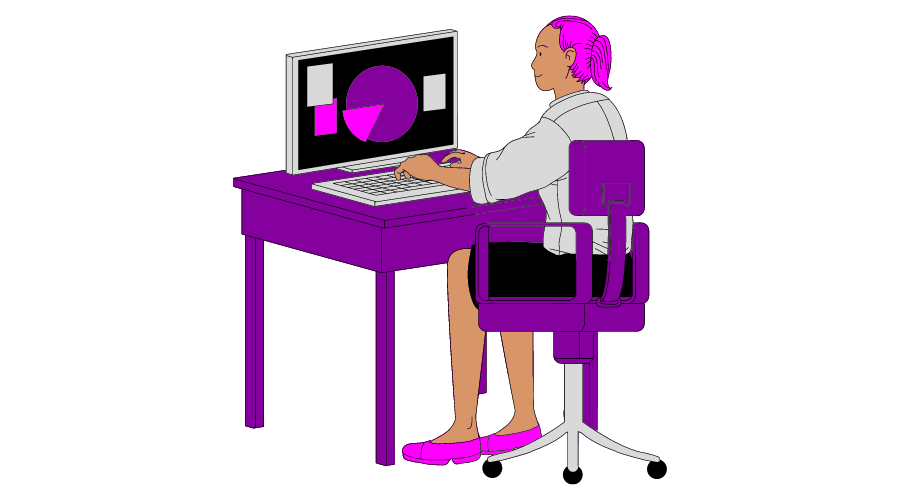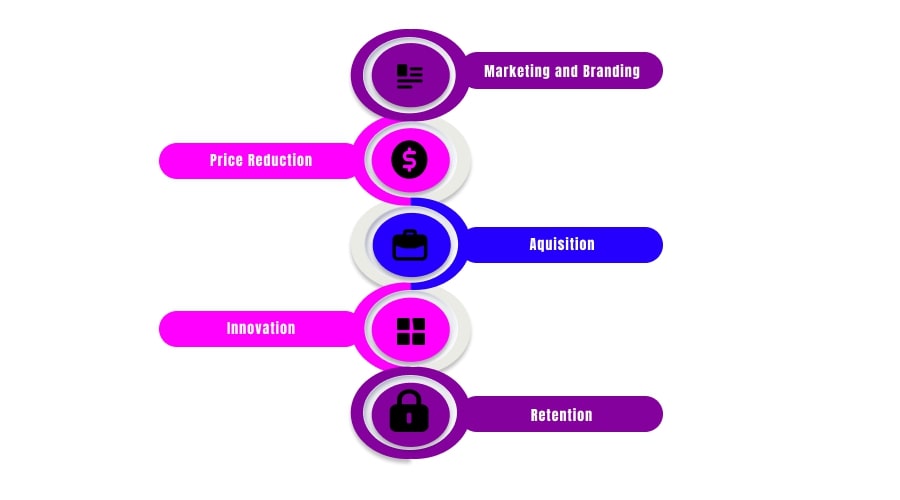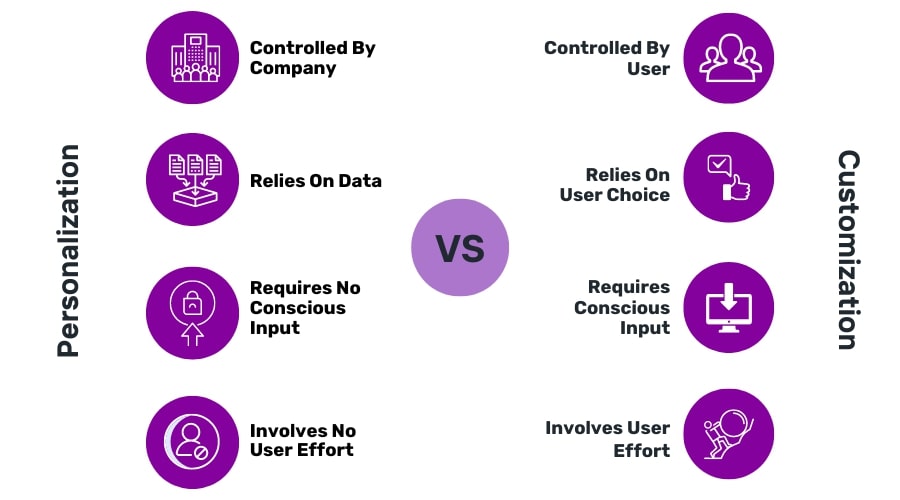
What Is Personalization?
Personalization Definition
Personalization means tailoring a product or service to fit the individual needs and demands. Personalizing is the act of creating individualized experiences for your customers. You can accommodate many design principles in personalization.
As the name suggests, personalization focuses on a person rather than a group.
Personalizing refers to designing a product by an individual’s needs by reflecting their attributions to the product or service.
Product managers must use product management software to maintain the data of the customer needs.
It helps the targeted individual identify the product as their own and resonate with it more profound.
Thanks to advanced digital technology, personalization is making a significant impact in digital design, such as web designing and app designing and marketing.
Designing means personalization can appeal to different customers in modern times who value their individuality and uniqueness.
And this you can observe through universal products or services.
A wide range of organizations and their marketing teams use personalization to:
- Increase user satisfaction
- Effective branding
- Conversion of sales, marketing, advertising
- Improving website traffic
Please note that there is a difference between personalization and customization.
Organizations do personalization using predictive technology and the customer’s data to design the changes.
For instance, Netflix recommends movies on the basis of your previous choices.
On the other hand, users do customization using the modifications available in the design.
For example, while signing up for Netflix, you have to initially choose the shows you like based on which your feed is further personalized.
What Are the Advantages of Personalization?
One of the benefits of personalization is that it significantly improves both internal and external operations of any given organization or business.
The following are the critical advantages of personalization:
Increases Engagement
You will find a lot of marketing messages in your inbox or even on your social media platforms.
However, the ones that stand out are the ones that have something that speaks directly to you.
For instance, your name caters to your individual needs. And this is what the customers love!
Research suggests that 72% of customers only engage with personalized marketing messages. Hence, email marketing, social media marketing, etc., can all be designed to suit individuals’ needs.
In digital design, an effectively personalized website or app will feel like a dialogue with a friend where the user’s name is visible, the history of their previous activities is shown, and a feed that they will find helpful.
The developers can design the content as per the needs of their customers. In all, it will lead to a significant level of engagement.
More Sales
An effective personalization strategy not only boosts engagement but also increases sales.
In user research conducted by Econsultancy, they found that almost 93% of businesses benefit from the personalization strategies. They also saw a significant rise in their sales.
When marketing personalization is automated, it helps identify which platform the customers engage with the most.
Then, a follow-up can be sent automatically across different channels. Such a process makes sign-up more instinctive because customers feel like they are being spoken to individually. This nudges prospects through the funnel.
Measure Success
Due to personalization, businesses can test the propositions that connect with customers.
When you look through the marketing lens, personalization gives businesses the data to track campaigns and understand how the business is performing.
Once you know what customers buy, engage with, and look for, planning strategically, making informed decisions, and painting a clear commercial picture becomes easier.
However, it is crucial to understand the fine line between target marketing and being invasive.
Effective campaigns are the ones that can understand the customer’s needs without breaching their privacy.
You must familiarize yourself with consumer privacy laws to make your campaign function to its full potential. Otherwise, you will likely end up in the spam folder.

What Are Examples of Personalization?
Have you seen the “Recommended for you” section on Netflix or “We think you will like…” on Amazon? That is what we are referring to when we talk about personalization.
These are the cases where the more you search on the platform, you can store more information on their system to tailor your feed to the likes of your previous choices.
The next time you visit the website or the app, you will find items similar to your previous searches.
Companies do this hoping you will tap on them and eventually buy them.
Personalization vs. Customization
The two buzzwords doing the round in modern marketing are the terms personalization and customization.
However, they are not synonymous. Personalization and customization have different meanings and implications.
Personalization refers to tailoring services per product and customers’ needs.
Meeting needs makes customer interactions faster and more efficient. Thereby increasing customer satisfaction and chances of them returning for the products.
A personalization example is when amazon personalizes the homepage as per the user’s previous visits, searches, purchases, and views of the page.
On the other hand, customization refers to the action that the user or the customer takes.
They do this to modify and satisfy the needs of a particular task or an individual.
The significant difference between how personalization and customization words are ‘WHO’ is making the needed changes.
Let’s imagine a scenario.
Suppose you are running late for work and you have to take a family car to your workplace. As you enter the car, your seat adjusts according to your position. Your favorite music starts to play from the system.
And finally, to cool your temperature down (pun intended), the AC adjusts to the normal temperature that you like!. That is what we refer to as personalization.
On the other hand, if it’s your friend’s car, you will get in the car, adjust your seat as per your needs, sort through the playlist, click on the album you are interested in, and put the AC on the temperature you like.
In this case, you had to make those changes personally. That is what we call customization. It was your hands that made those changes.
Companies use personalization through predictive technology and customer data.
When a customer manually makes changes to suit their needs, that is customization.
Personalization will not require any conscious input, whereas customization will require the aware input data.
Marketing emails with the generic opening of ‘hey customer’ or ‘hey XYZ’ refer to the personalization.
When SaaS companies offer purchase plans for their products, customers are allowed to choose according to their needs. That is customization.

Which Personalization Is Right for Your Brand?
You can personalize your brand by using the following steps to achieve the best results. After following these steps, you can understand which personalization suits best for your brand.
Track consumer behaviors.
Companies can track everything from what customers do on their websites to their interactions on social media pages.
These metrics will help you understand your customers’ behaviors and identify the different possibilities they are looking for on your page.
About 90% of the consumers provide personal information because they know that they can receive personalized offers.
Frequently analyze data.
The data you collect from your users must now be analyzed frequently using the google analytics tool.
You can also customize dashboards to meet marketing needs. Thereby targeting appropriate advertising and eventually getting conversions.
Your results will mainly depend on turning the data into consumer information.
Look at the customer needs.
Anticipating customer needs will lead to high engagement. Most often, customers aren’t even aware if they want a product or service until you make an offer to them.
You may also be interested in:
FAQs
Personalization in integrated marketing refers to the strategy through which businesses deliver content to their recipients. This personalization is through various analysis, data collection, and automation technologies.
The goal is to interact with customers.
the idea of personalization was born in the 1980s. It became famous with the term’ relationship marketing’ coined by Leonard berry.
The boost for personalization also came about in the 2000s when companies personalized email campaigns to engage more and more customers.
Big data is the key enabler of personalization. Another enabler of personalization is direct mail.
